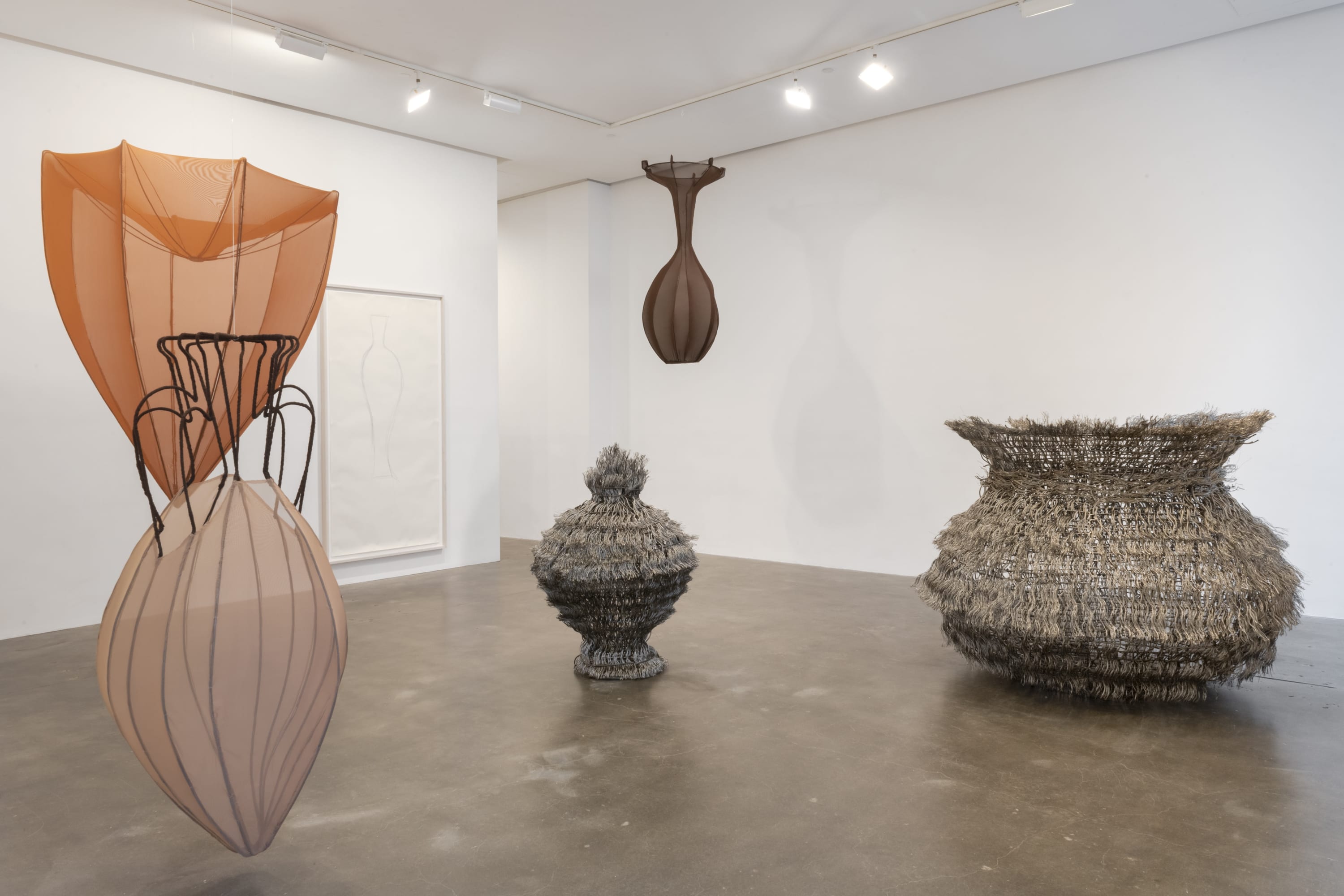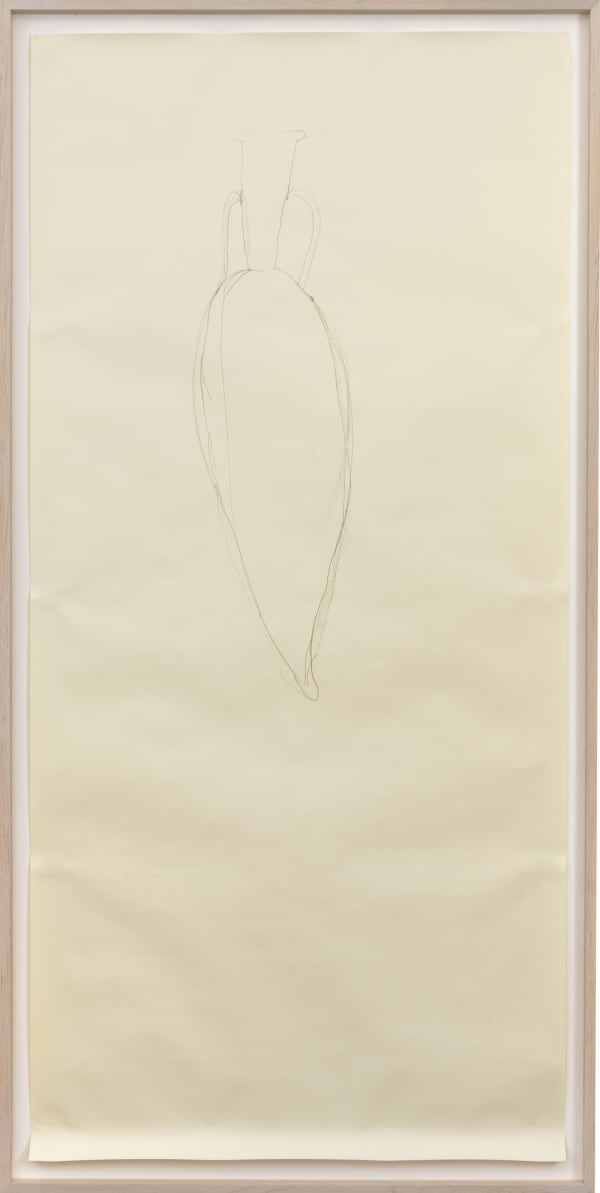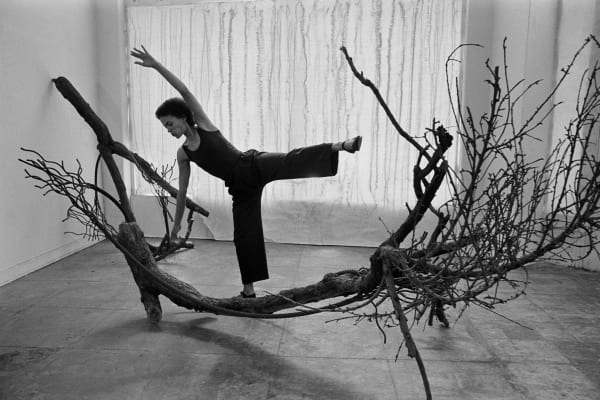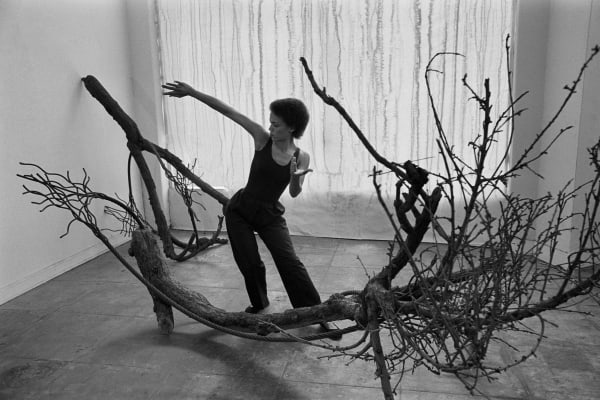-
MAREN HASSINGER
We Are All Vessels | Susan Inglett Gallery -

-
1. We are ALL vessels capable of compassion.
2. We are all equal. We share our humanity.
- Maren Hassinger
Susan Inglett Gallery is pleased to present We Are All Vessels, MAREN HASSINGER’s second solo exhibition with the Gallery, from 29 April through 12 June 2021.
Three large vessels framed in wire and clad in sheer fabric sway ethereally from the ceiling of the Gallery, two woven wire rope equivalents rest below, firmly planted on the ground. Hassinger looks to the vessel for its rich history and symbolism, for its resonance with the human body. Scale brings these objects in direct communication with the viewer, while their anthropomorphic design sparks a sense of recognition.
Hassinger observes that “vessel” is a term often ascribed to women. She asks that we free ourselves from the traditional limitations of that label, using her work to expand its meaning: “I believe that the word ‘people’ does not make the distinction of race, or gender, or class, or origin of any sort.” Hassinger shares the space with young artists, former students. By creating a platform where young and old, established and emerging, work together side by side equally, the project itself reinforces these signals of humanity. In the qualities shared by these vessels, and between us, we see our commonality writ large. We are indeed all Vessels.
-

Maren Hassinger, Untitled Vessel (Large Body), 2021
-

Maren Hassinger, Untitled Vessel (Small Body), 2021
-

-

Maren Hassinger, Untitled Vessel (Red), 2021
-
-

Maren Hassinger, Untitled Vessel (Brown), 2021
-
DRAWINGS
AMPHORA I & AMPHORA IIHassinger’s totemic drawings present two variations on the amphora, or ancient Greek water vessel, each scaled to the human body. The artist delicately sketches the outline of these pots with a light but sweeping gesture, the shape and airiness of her mark analogous to the hanging fabric vessels. Amphora I and Untitled Vessel (Brown) share the same elongated neck and sloping sides— Amphora II’s curved handles, like arms resting akimbo, connect with the steel handles of Untitled Vessel (Beige). The drawings are likewise in conversation with the steel sculptures, Untitled Vessel (Small Body) and Untitled Vessel (Large Body), the metallic graphite mark reflecting the wispy threads of wire rope. Sculptor's drawings hold a special place in the genre. Often spontaneous, refined expressions, they capture the very essence of their subject. Hassinger's drawings are no different, focusing on the basic lines that define us and traits that we all share. With these simple gestures, the artist reminds us that at root we are each of us the same, conceived as equals.
-
-

-

Photo: Grace Roselli, Pandora’s BoxX Project
MAREN HASSINGER: We Are All Vessels
Past viewing_room













